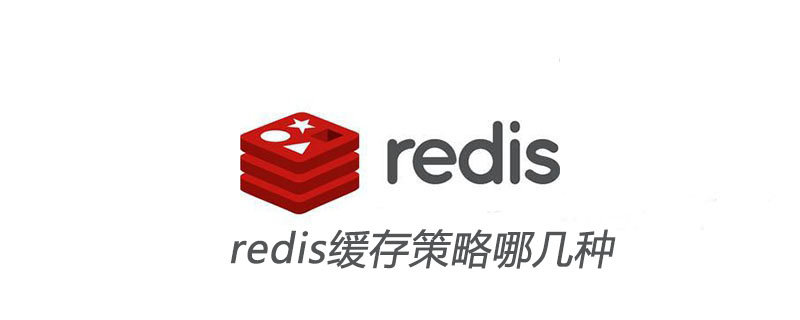When using Redis as a cache, if the memory space is full, old data will be automatically evicted. Memcached works this way by default, and most developers are familiar with it. LRU is the only recycling algorithm supported by Redis.

Eviction Strategy (Recommended learning: Redis Video Tutorial)
When the maximum memory limit (maxmemory) is reached, Redis determines the specific behavior based on the policy configured by maxmemory-policy.
The current version, the strategies supported by Redis 3.0 include:
noeviction: Do not delete the strategy. When the maximum memory limit is reached, if more memory is needed, directly Return error message. Most write commands will cause more memory to be occupied (with rare exceptions, such as DEL).
allkeys-lru: Common to all keys; delete the least recently used (LRU) keys first.
volatile-lru: Only limited to the part where expire is set; delete the least recently used (LRU) key first.
allkeys-random: Common to all keys; randomly delete some keys.
volatile-random: Only limited to the part where expire is set; randomly delete a part of the key.
volatile-ttl: Only limited to the part where expire is set; keys with short remaining time (time to live, TTL) will be deleted first.
If the expire key is not set and the prerequisites are not met; then the behavior of volatile-lru, volatile-random and volatile-ttl strategies is basically the same as noeviction (no deletion).
You need to choose an appropriate eviction strategy based on the characteristics of the system. Of course, you can also dynamically set the eviction policy through commands during operation, and monitor cache misses and hits through the INFO command for tuning.
Generally speaking:
If it is divided into hot data and cold data, it is recommended to use the allkeys-lru strategy. That is, some of the keys are often read and written. If you are not sure about the specific business characteristics, then allkeys-lru is a good choice.
If you need to read and write all keys in a loop, or the access frequency of each key is similar, you can use the allkeys-random strategy, that is, the probability of reading and writing all elements is almost the same.
If you want Redis to filter keys that need to be deleted based on TTL, please use the volatile-ttl strategy.
The main application scenarios of volatile-lru and volatile-random strategies are: instances with both cache and persistent keys. Generally speaking, for scenarios like this, two separate Redis instances should be used.
It is worth mentioning that setting expire will consume additional memory, so using the allkeys-lru strategy can make more efficient use of memory, because this way you no longer need to set the expiration time.
For more Redis-related technical articles, please visit the Introduction to Using Redis Database Tutorial column to learn!
The above is the detailed content of What are the redis cache strategies?. For more information, please follow other related articles on the PHP Chinese website!
 Commonly used database software
Commonly used database software
 What are the in-memory databases?
What are the in-memory databases?
 Which one has faster reading speed, mongodb or redis?
Which one has faster reading speed, mongodb or redis?
 How to use redis as a cache server
How to use redis as a cache server
 How redis solves data consistency
How redis solves data consistency
 How do mysql and redis ensure double-write consistency?
How do mysql and redis ensure double-write consistency?
 What data does redis cache generally store?
What data does redis cache generally store?
 What are the 8 data types of redis
What are the 8 data types of redis